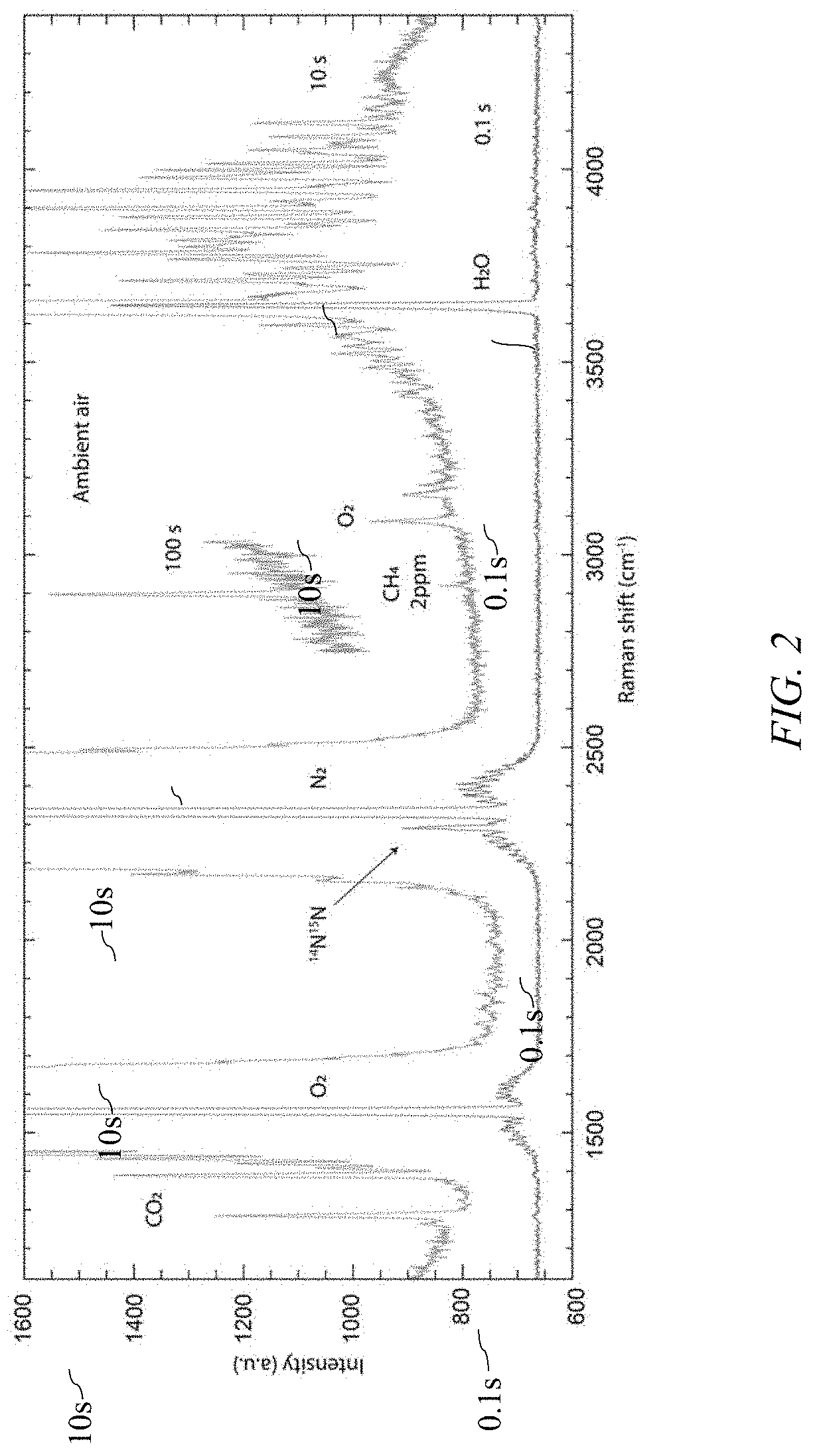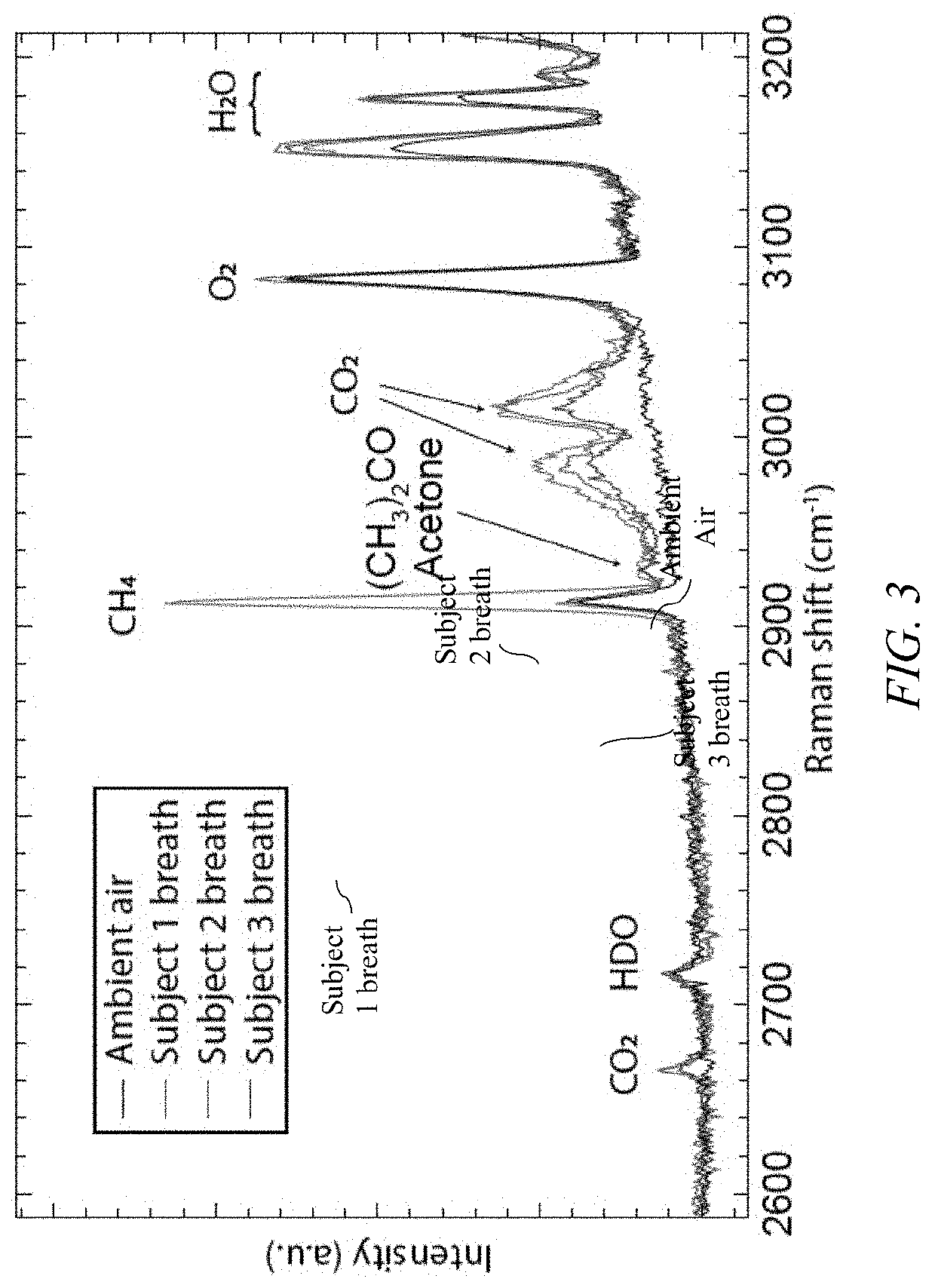Diode-pumped multipass cavity raman gas sensor and method of use
a multi-pass cavity, gas sensor technology, applied in the direction of optical radiation measurement, instruments, spectrometry/spectrophotometry/monochromators, etc., can solve the problems of preventing the realization of a miniaturized, consumer-viable product for trace gas detection, and preventing gas phase srs at parts-per-billion (ppb) concentrations, etc., to achieve compact and economical
- Summary
- Abstract
- Description
- Claims
- Application Information
AI Technical Summary
Benefits of technology
Problems solved by technology
Method used
Image
Examples
Embodiment Construction
[0023]Spontaneous Raman scattering (SRS) is ideally suited for trace gas detection due to its simplicity and versatility. However, the intensity of Raman scattered light from a gas sample is typically low, particularly when detecting at trace concentrations. Spontaneous Raman scattering thus, at a minimum, requires a powerful laser with high spectral purity, which can be complex, expensive and can consume a large amount of power.
[0024]A substantial advantage of spontaneous Raman scattering (SRS) is the possibility of simultaneously detecting a large number of chemical species using a single laser source and a single detector. However, one of the most common impediments to providing a cost-effective implementation of SRS is the high cost of a stable multi-Watt laser source. Laser light for SRS is typically derived from a diode-pumped solid-state laser, and in particular, a frequency-doubled 1064 nm laser is commonly used. To overcome the expense and complexity associated with a multi...
PUM
 Login to View More
Login to View More Abstract
Description
Claims
Application Information
 Login to View More
Login to View More - R&D
- Intellectual Property
- Life Sciences
- Materials
- Tech Scout
- Unparalleled Data Quality
- Higher Quality Content
- 60% Fewer Hallucinations
Browse by: Latest US Patents, China's latest patents, Technical Efficacy Thesaurus, Application Domain, Technology Topic, Popular Technical Reports.
© 2025 PatSnap. All rights reserved.Legal|Privacy policy|Modern Slavery Act Transparency Statement|Sitemap|About US| Contact US: help@patsnap.com



